Torn between the convenience of gas and the flavor of charcoal, but don’t have the budget or space for both?
The Char-Griller Dual Fuel 5030 gives you the best of both worlds in one compact, budget-friendly package. You can fire up propane for quick weeknight meals or go low and slow with charcoal when you’ve got the time.
After putting it through its paces with everything from carne asada to Korean short ribs, here’s how it stacked up in the real world, along with a few tricks for turning the charcoal side into a capable smoker.
Char-Griller Duel Function Gas & Charcoal Grill
Our Verdict: The Char-Griller Dual Fuel 5030 combines gas and charcoal cooking in a compact, budget-friendly grill. It lights fast on propane, brings rich flavor on charcoal, and can handle small smoking projects with some attention. Not a dedicated smoker, but a versatile choice for casual grillers short on space or budget.
Pros:
- Gas + charcoal on a budget
- Quick propane ignition
- Good flavor from charcoal cooks
Cons:
- Limited cooking space
- Not a true dedicated smoker
- Ask ChatGPT
Check Latest Price
Unboxing and Assembly
The Char-Griller arrived in a lot of separate pieces, so don’t expect to be grilling five minutes after delivery. It took us about two hours to put together from start to finish. You could do it alone, since none of the parts are especially heavy, but an extra pair of hands makes lining things up and holding panels in place much easier.
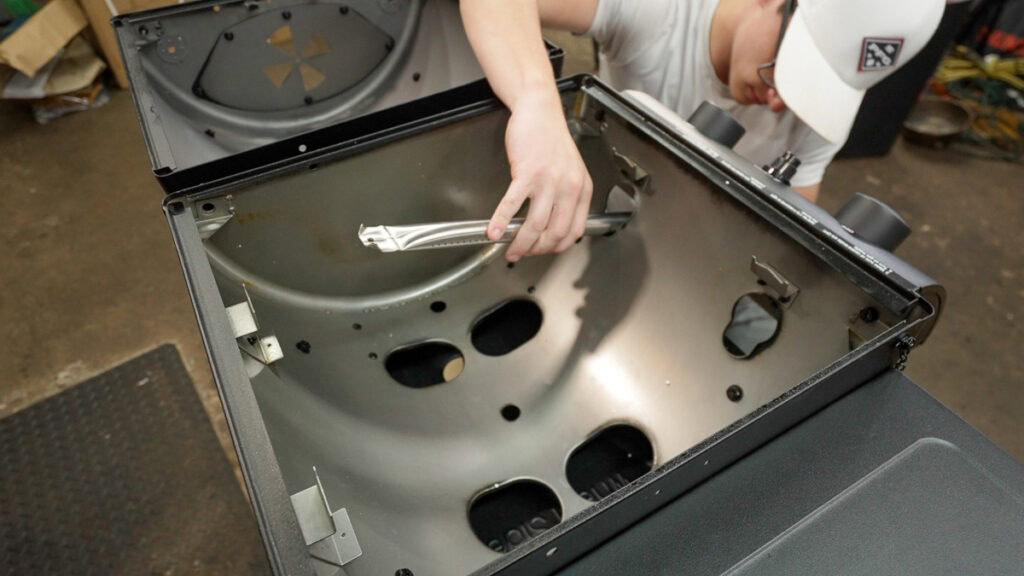
The assembly process isn’t overly complicated, but there are plenty of small parts and fasteners to keep track of. Take your time and follow the instructions carefully as rushing will only mean backtracking later.
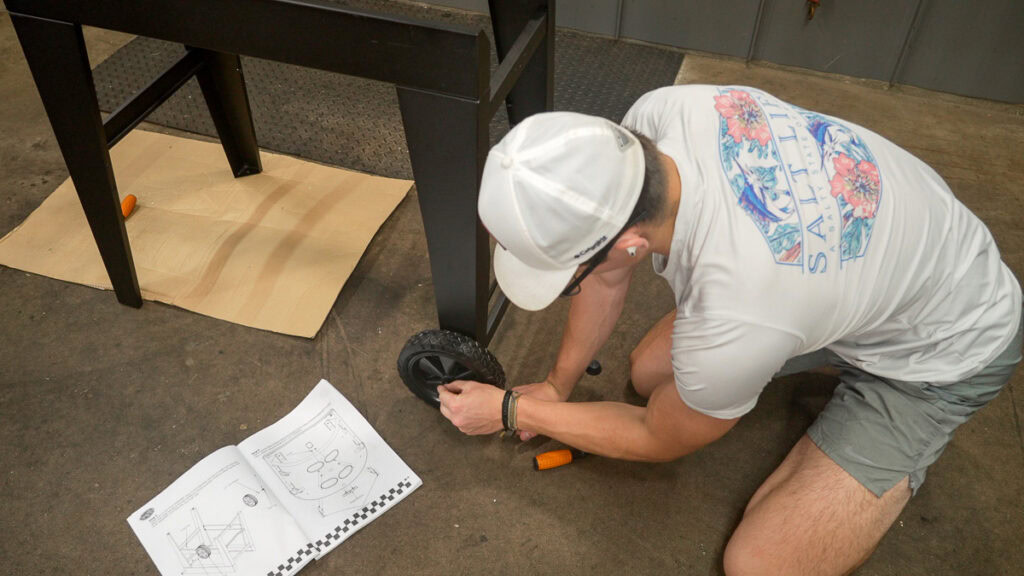
Once assembled, the grill feels stable, and at 125 lbs it’s light enough to move when you need to. The two-wheel, two-leg design means you’ll have to lift one side to roll it, but it’s not a strain for most people.
Design and Build Quality
You get 870 square inches of total cooking space, split between the gas and charcoal sides. Each chamber offers 303 square inches on the main porcelain-coated cast iron grates, plus a couple of hundred square inches across the warming racks. The upper racks appear to be stainless steel, although the exact material isn’t specified.
On the gas side, you get two burners pumping out a combined 24,000 BTUs, lit with an electronic ignition system. If the battery dies, there’s a built-in matchstick holder for backup lighting.
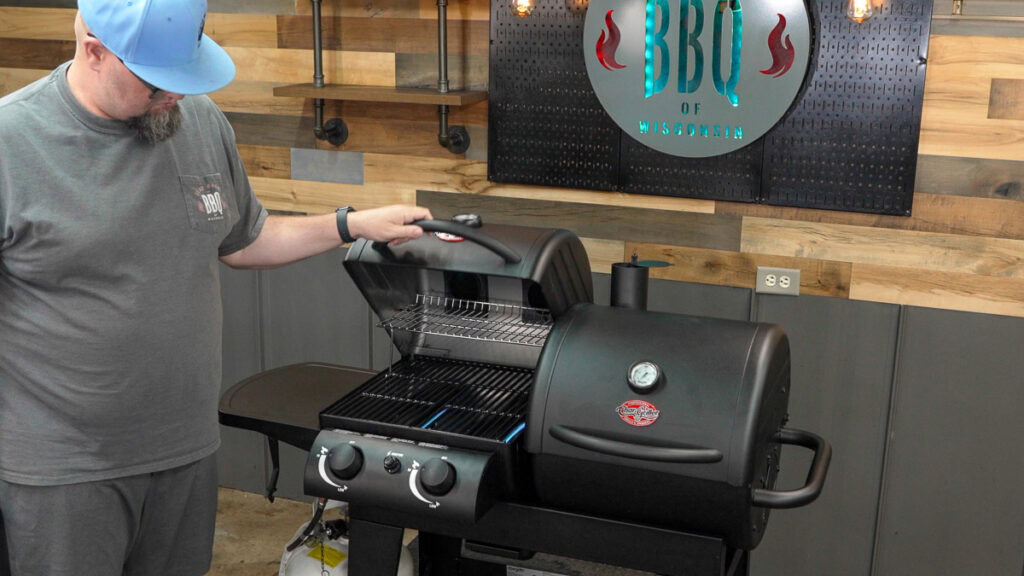
Other practical touches include:
- A side shelf with three tool hooks
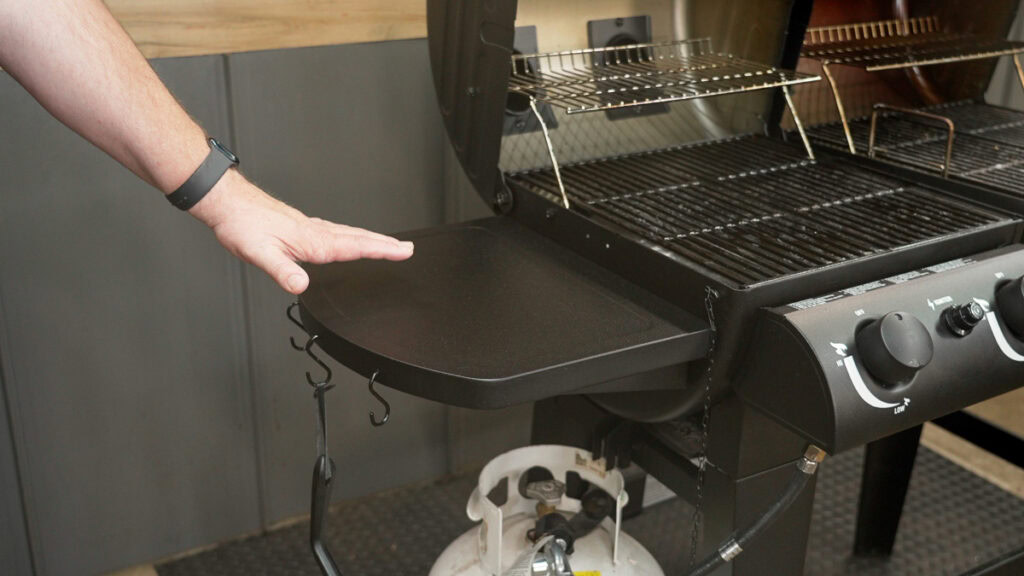
- A grate-lifting tool for handling hot grates
- Adjustable vents on both chambers for airflow control
- Built-in lid thermometers for each side, which read fairly accurately during testing
- A simple grease catch that should be checked every three or four cooks to prevent overflow
While the wheel-and-leg setup keeps the grill stable, swapping the peg legs for rotating casters would make it easier to reposition without lifting.
Cooking on the Char-Griller 5030
We put both sides of the Dual Fuel 5030 through real-world tests, from quick weeknight cooks to slower weekend barbecue, to see how it performs when you actually get your hands greasy.
Gas Side Test: Speed and Heat
If you’re firing up dinner after work, the propane half of the Char-Griller is ready to roll in seconds. In testing, the electronic ignition lit both burners immediately, and the 24,000 BTUs across this compact chamber delivered strong, even heat.
For the initial burnoff, both burners were set to max, lid down, for about an hour — an easy way to burn off that machining oil and any debris from the factory.
First cook? Carne asada for Taco Tuesday. And who doesn’t love that on a Tuesday night? After a few hours in marinade, the skirt steak hit the porcelain-coated cast iron grates and picked up a decent char in just minutes.
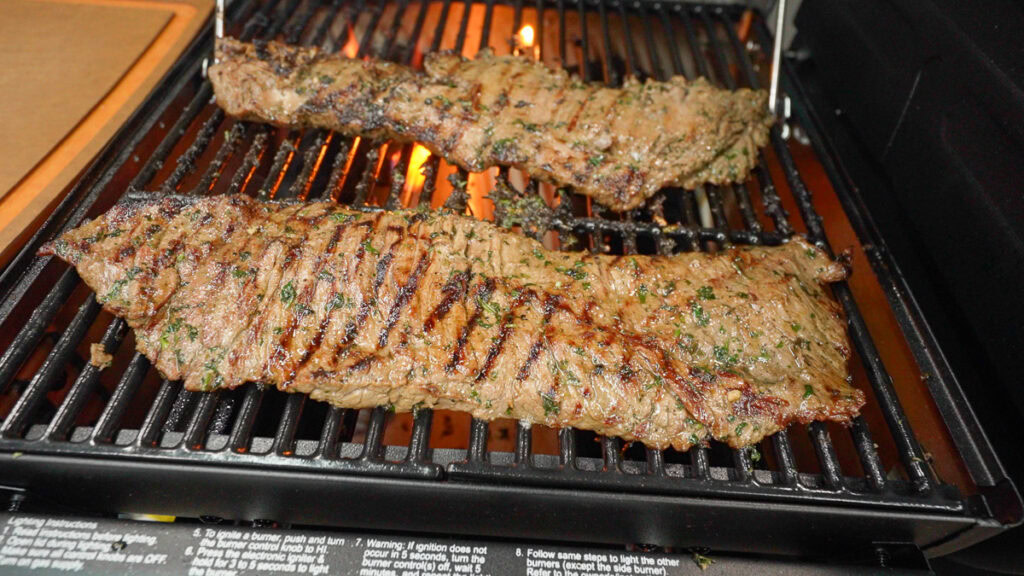
The gas side’s responsive heat made it simple to avoid overcooking while still locking in plenty of juiciness.
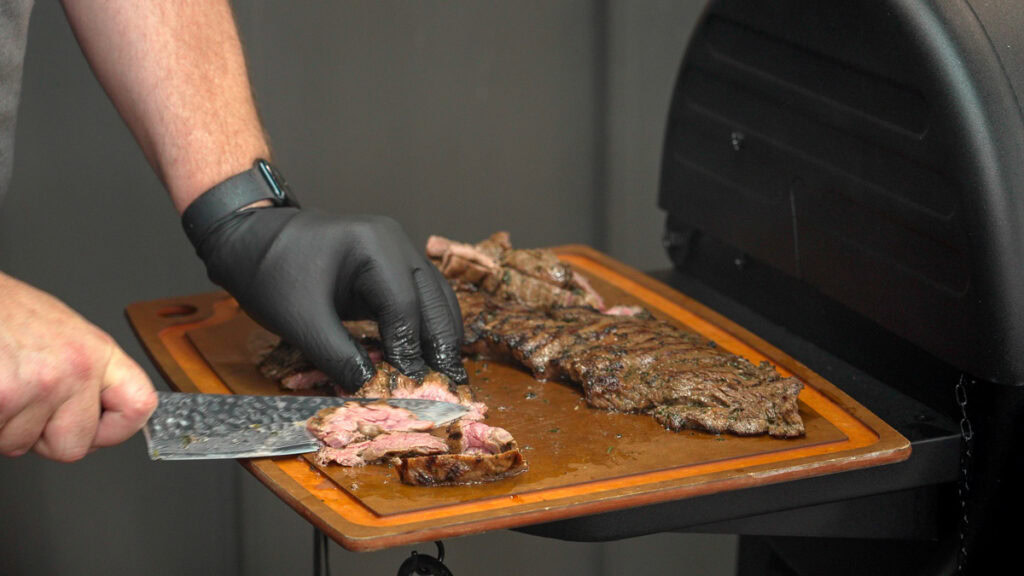
This setup isn’t going to match a high-end searing station, or even the sear I get on my Weber Spirit, but for fast, reliable weekday grilling, it’s hard to complain. You can have the burners lit, meat cooking, and dinner on the table in the time it takes to warm up a side salad.
Charcoal Side Test: Flavor and Control
When you’ve got a little more time, the charcoal side delivers that unmistakable live-fire flavor. It works with either briquettes or lump. For the burnoff, I lit a chimney of lump, dumped it into the center of the chamber, opened both vents wide, and let it burn out completely before the first cook.
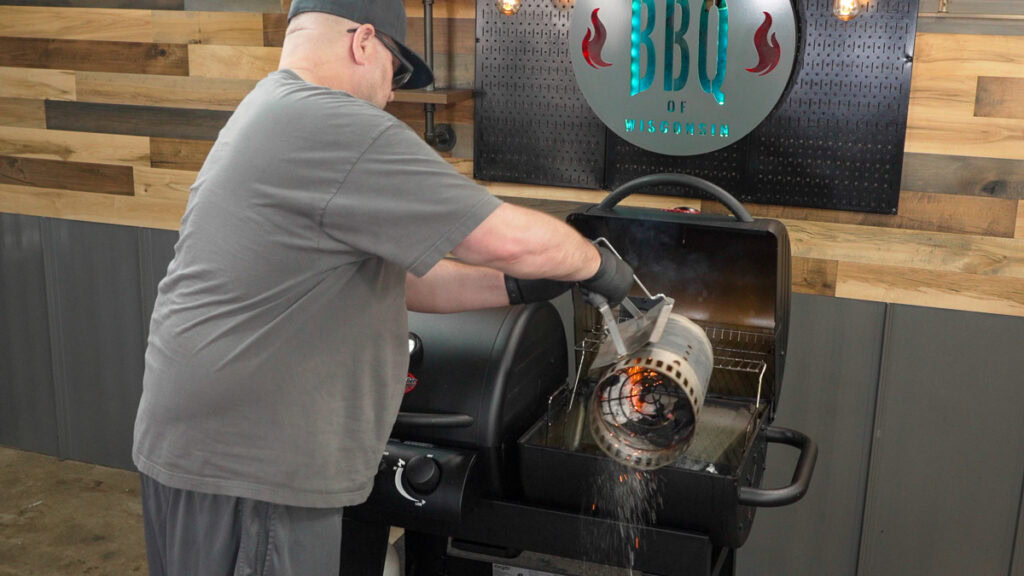
For testing, I went with Korean BBQ short ribs. The thin-cut ribs picked up a fantastic smoky edge from the charcoal, and the smaller chamber concentrated the heat for quick, even cooking. Adjustable vents are built in, but in my experience on small pits like this, it’s better to leave them wide open for consistent airflow and control the temp by adding fuel.
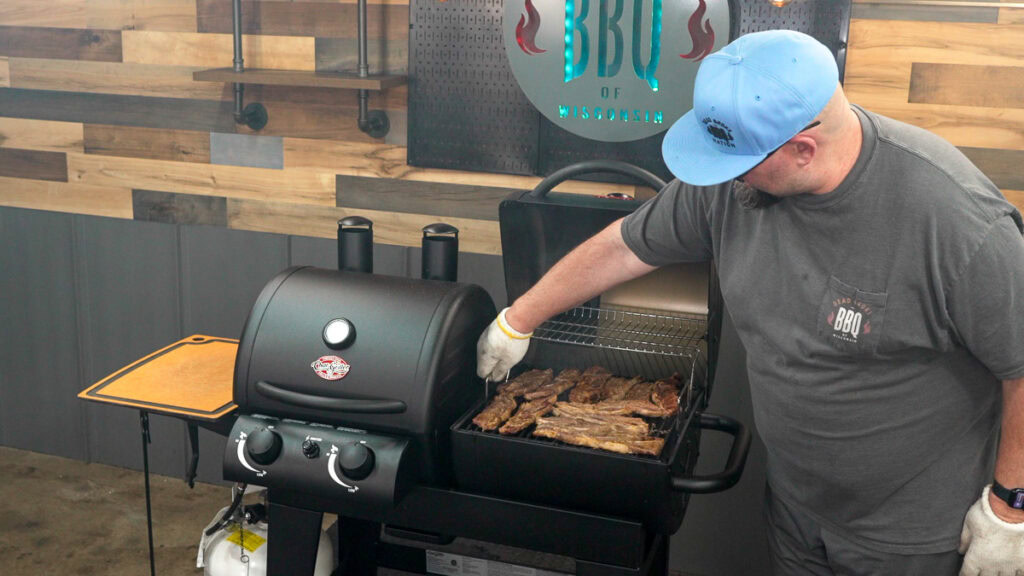
Space is the main limitation here. You’re not loading it up for a neighborhood cookout, but for a couple racks of ribs, burgers, or a few steaks, it handles the job well. And that extra depth of flavor compared to gas is exactly why you’ll want to keep coming back to this side.
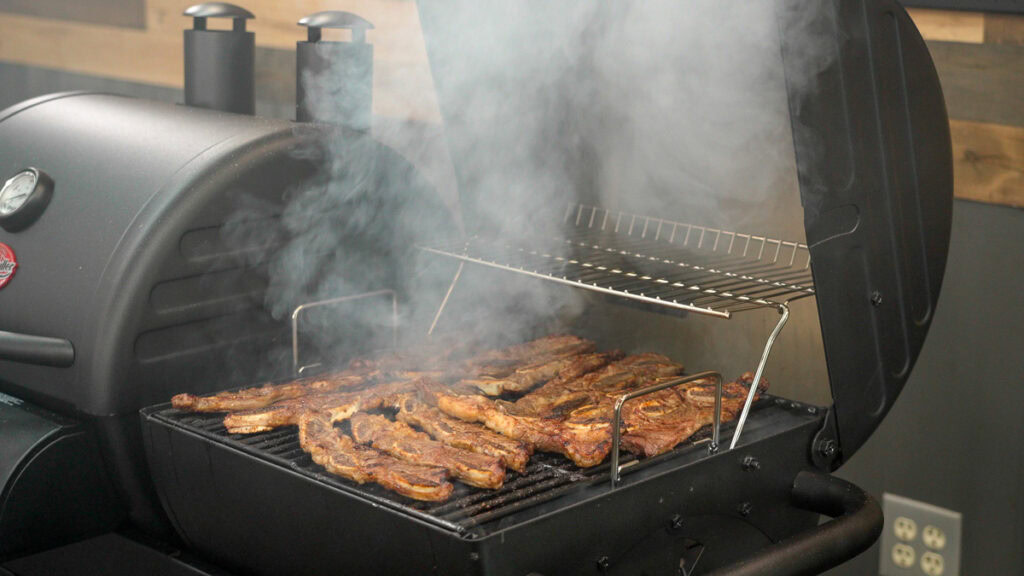
Smoking Test: Low and Slow Performance
Char-Griller markets the 5030 as both a grill and a smoker, but looking at the design, my hopes weren’t exactly sky-high.
I set up the charcoal side for indirect heat: 15 lit briquettes on the far right, 10 unlit next to them, then wood chunks for smoke. The rack of St. Louis ribs went on the far left to keep them away from direct heat. I also tried to keep them as straight as possible so they’d cook evenly. A small detail that makes a big difference over hours.
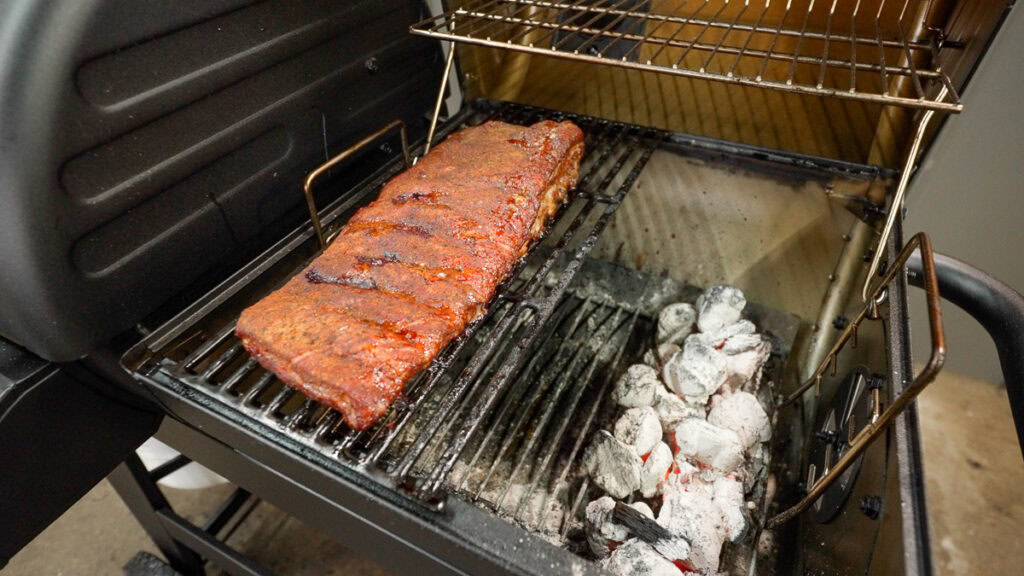
With both vents wide open, the temperatures ranged between 250°F and 290°F. When the temperature started to dip, I tossed in 5 to 7 more briquettes to bring it back up to around 275°F. I spritzed the ribs about once an hour to help keep them moist.
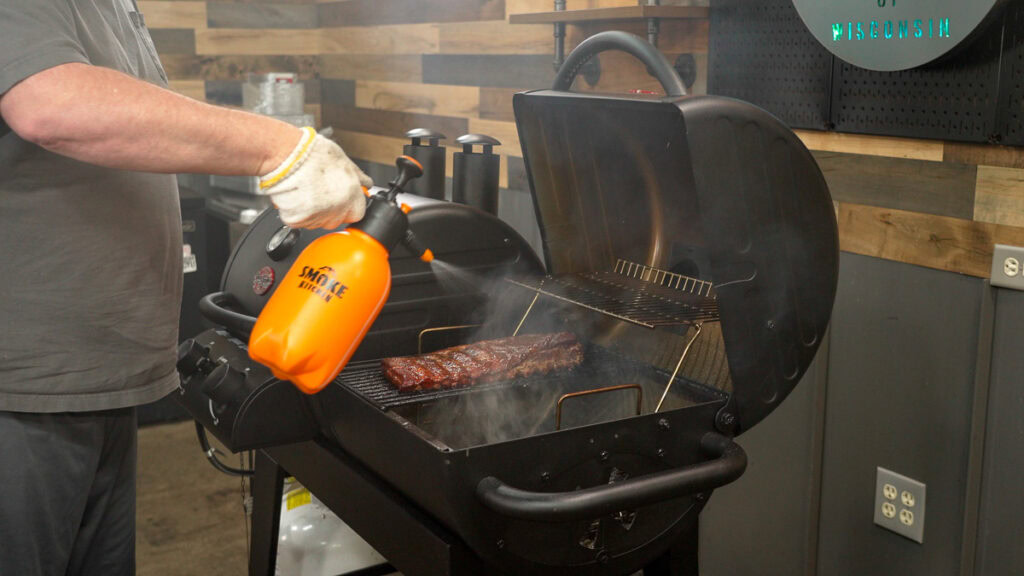
After four hours on the charcoal side, they had great color and were starting to get tender. I moved them to the gas side, lit one burner on low (around 300°F), and let them finish indirect for another hour and a half. The result? Tender, flavorful ribs. And yes, I probably had sauce on my cheek. It’s barbecue; you’re supposed to get messy.
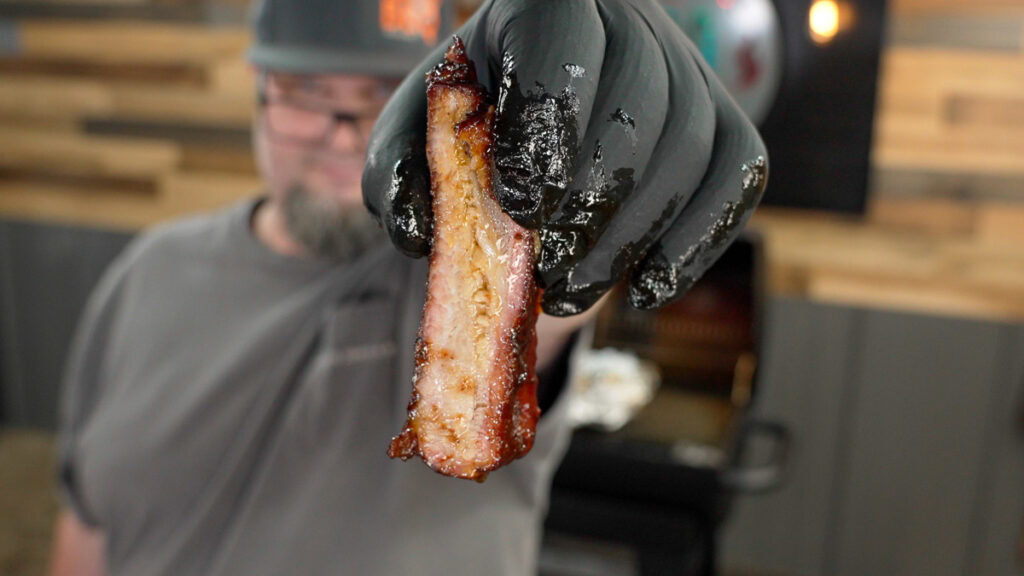
This isn’t a dedicated smoker. The small charcoal chamber means less food at once, and you’ll be tending the fire more than on a set-and-forget unit. But if you’ve got the patience, you can still turn out some very respectable barbecue.
Cleanup and Maintenance
Post-cook cleanup is straightforward if you keep up with it. Scrape down the grates after each use, and if you can, crank the heat with the lid closed for a short burnoff to loosen debris. Once cooled, remove the grates and scrape the inside of the chamber.
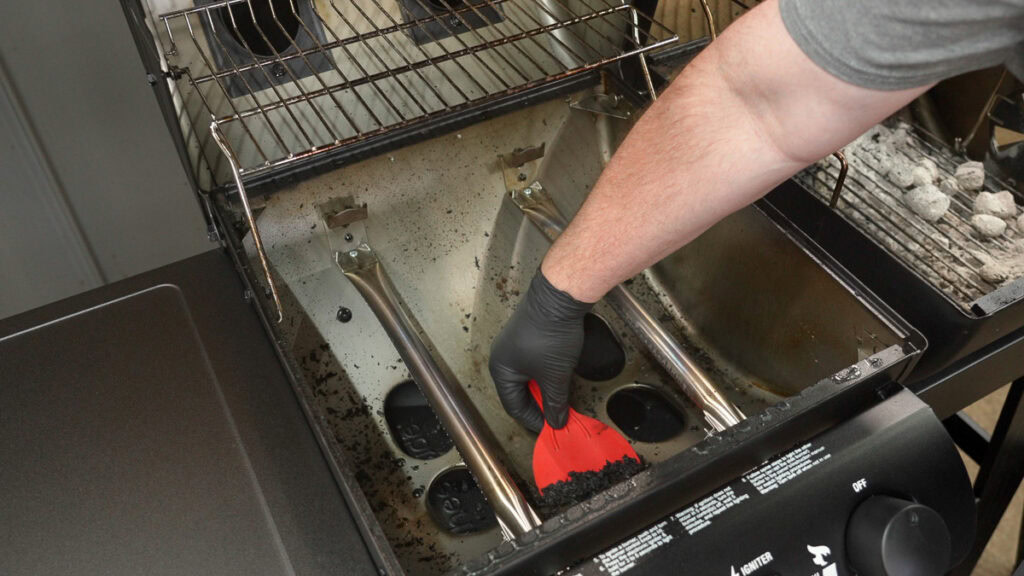
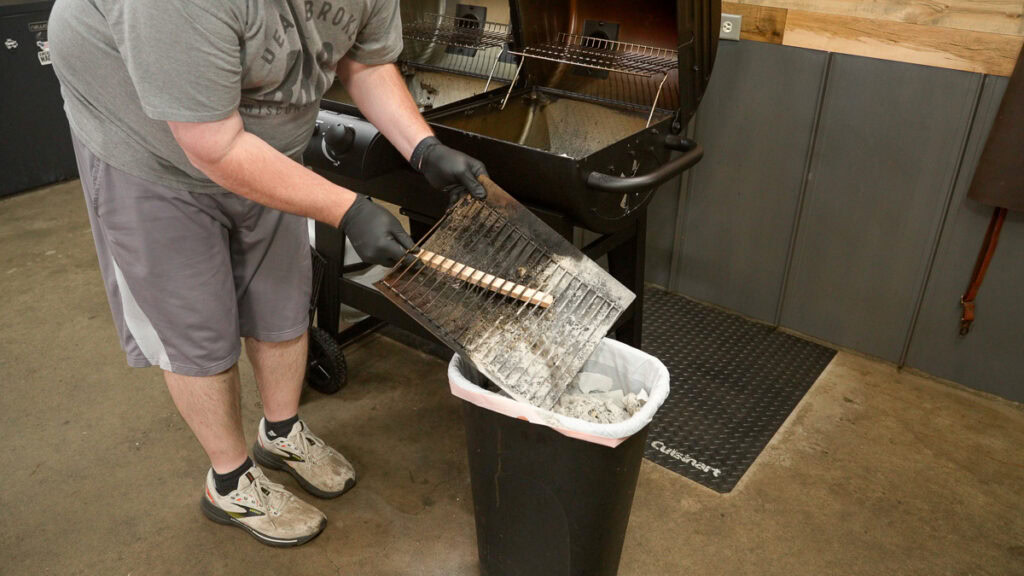
The Easy Dump ash pan lives up to its name. Once the charcoal is fully cooled (ideally the next day), you can lift it out and dump the contents. Any stubborn grease may need a quick scrub with a wire brush. For a deeper clean, you can hose down the interior and then apply a light coat of cooking spray to help prevent rust.
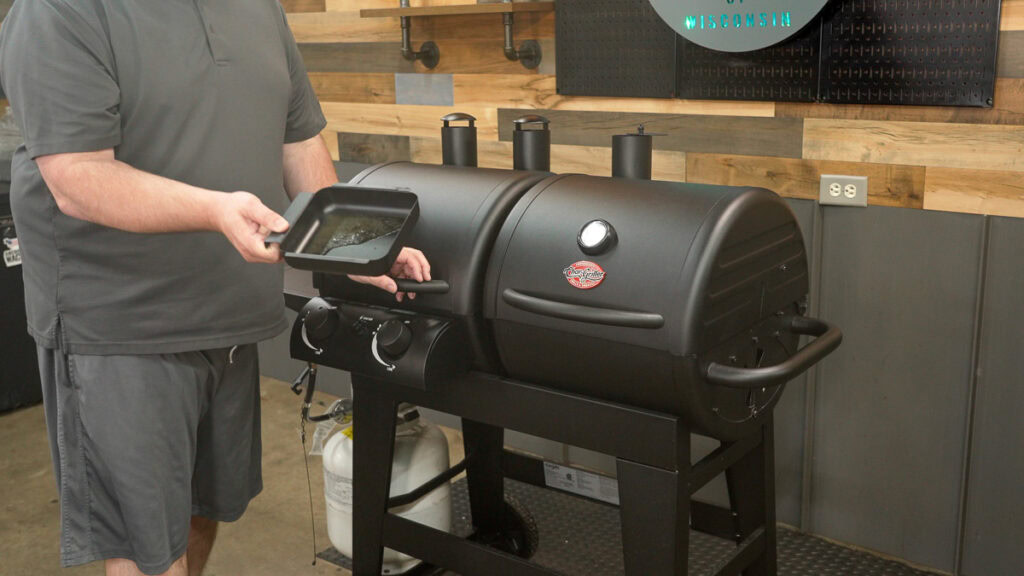
The grease catch should be checked every three to four cooks to avoid overflow. It’s a simple setup, but letting it fill can lead to mess and flare-ups.
Final Verdict
Char-Griller sells the 5030 as both a grill and a smoker. In reality, it’s primarily a dual-fuel grill with the bonus that, with a bit of know-how and fuel management, it can put out smoked ribs that would surprise you. It’s quick and convenient on propane, flavorful on charcoal, and adaptable enough for smaller barbecue projects.
You’ll sacrifice cooking space, need to tend the fire more than you would on a purpose-built smoker, and won’t get the performance of a high-end gas or charcoal rig. But if you want one affordable, compact unit that can handle weeknight grilling and weekend experimenting, the 5030 delivers more than its design would lead you to expect.
Did you miss our previous article...
https://manstuffnews.com/backyard-grilling/sweet-heat-bbq-chicken
 Backyard GrillingWeekend WarriorsAdvice from DadBeard GroomingTV Shows for Guys4x4 Off-Road CarsMens FashionSports NewsAncient Archeology World NewsPrivacy PolicyTerms And Conditions
Backyard GrillingWeekend WarriorsAdvice from DadBeard GroomingTV Shows for Guys4x4 Off-Road CarsMens FashionSports NewsAncient Archeology World NewsPrivacy PolicyTerms And Conditions
